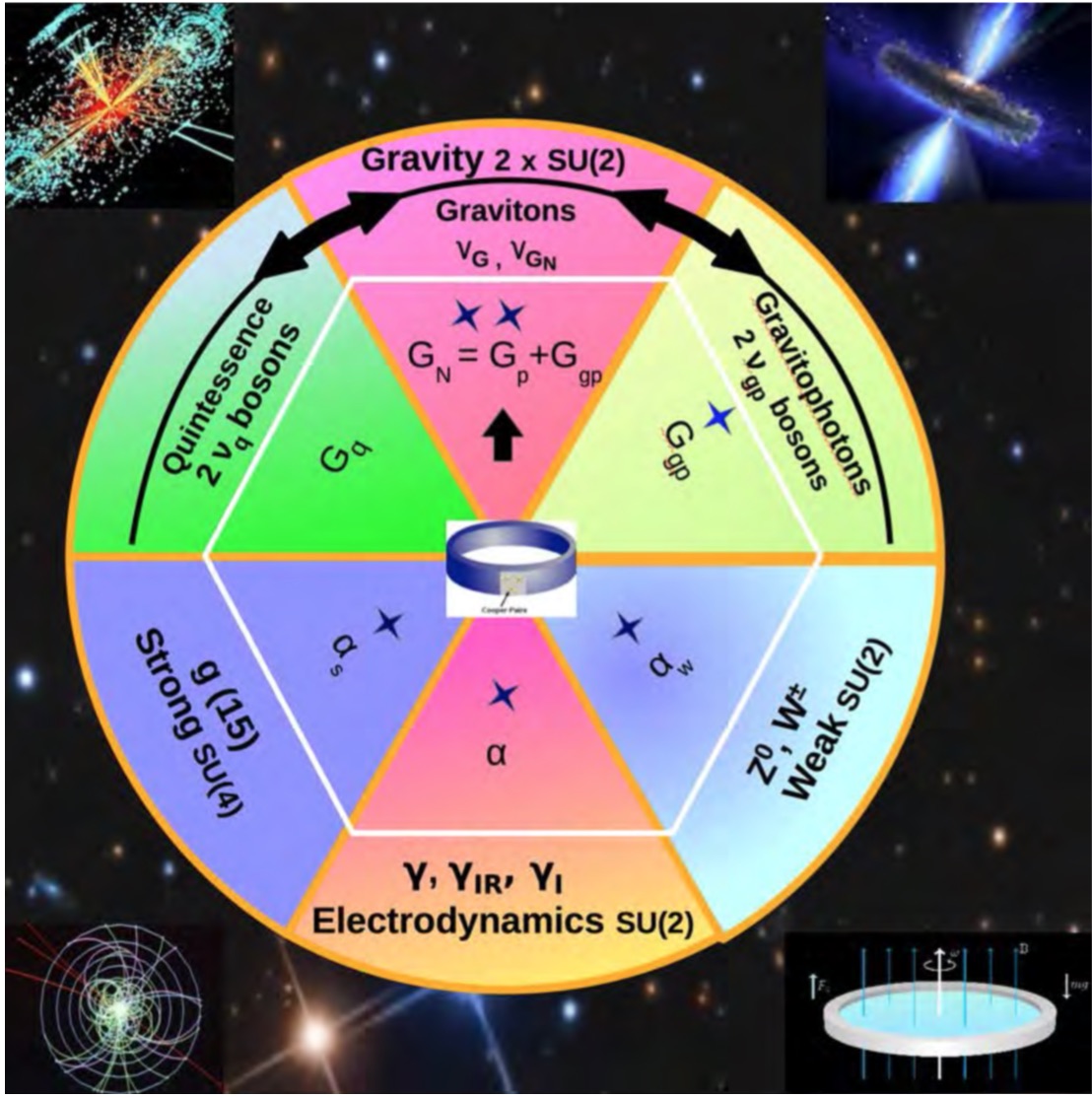In their book “Introduction to Physics, Astrophysics, and Cosmology of Gravity-Like Fields”, authors Drs. Jochem Hauser and Walter Dröscher posit what they believe to be shortcomings of several mainstream ideas in physics.
Below are selected outtakes from the book positioned as a brief listing of what EHT considers as incomplete or incorrect mainstream ideas in physics and what EHT offers as novel ideas in physics that often runs counter to mainstream thinking. Each of these ideas are explored in depth in the book, so I won’t even attempt to represent the evidence provided to back up these discussions since each could take pages of citations and calculations, which have already been offered by the authors.
Finally, I am certain that there are several novel proposals made by the authors of EHT which I have glossed over or missed completely, such is the wide ranging impact of the EHT model.
What EHT identifies as incomplete or incorrect ideas in physics:
There is no experimental basis for supersymmetry and superstring theory as extensions of the standard model of particle physics.
CDT (Causal Dynamical Triangulation) computer simulations reveal a spherical spacetime topology (de Sitter space), and thus the viability of wormholes and time travel now seems exceedingly unlikely.
There are neither singularities, nor infinities in physics. All physical quantities must remain finite.
There is no multiverse. All other potential universes cancel out.
The Universe must be closed, but might be cyclic.
There is no continuous spacetime. At the Planck length, all of spacetime is discrete.
There are no extra real spatial or real time dimensions greater than four when above the Planck length.
There exist no genuine static states in physics, and no static Universe. Everything in the Universe must be in motion.
Dark matter cannot be made of superpartners, WIMPS or super-WIMPS.
There is no neutralino particle that can explain dark matter.
Novel physics proposed by EHT:
EHT is an approach to geometrize physics but not completely, as envisaged by Einstein or later by Heim. Geometry alone is not physics.
EHT provides a classification scheme for particle families and physical interactions, but is not a genuine physical theory of elementary particles or gravitation.
EHT is a polymetric tensor theory, in contrast to Einstein’s monometric tensor theory of general relativity (GR). EHT is a super set of GR.
EHT postulates the existence of six fundamental forces, including three gravitational forces along with the known electromagnetic, weak and strong forces.
EHT should be considered as a phenomenological model to explain the existence of the six fundamental forces.
EHT employs quaternionic and octonionic complex number calculations to derive its predictions for particles and subspaces. This allows for negative masses and energies.
Spacetime is discrete or quantized at the Planck level.
One new gravitational interaction (force) is the gravitophoton interaction (particles are both attractive and repulsive).
Another new gravitational interaction (force) is the quintessence interaction (particles repulsive), responsible for the interaction with the spacetime field (de Sitter space).
Each of the two new gravitational interactions have their own associated gravitational constant resulting in different speeds of light (c): Ggp (gravitophoton) is 158,000 times c. Gq (quintessence) is 25,000,000,000 times c.
The existence of spacetime is the cause of dark energy (precursor of matter) and vice versa.
The structure of spacetime and the field of dark energy were generated at the same instant, being inextricably linked together and entangled.
There is no inflation field. It is dark energy.
There are two dark matter particles, both possessing negative rest mass and existing in a dual de Sitter space, making them undetectable by the LHC facility.
Dark matter, being outside our spacetime, can not be detected but its gravitational interaction with ordinary matter can be felt in our spacetime.
